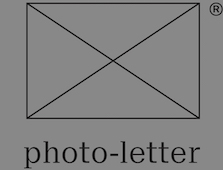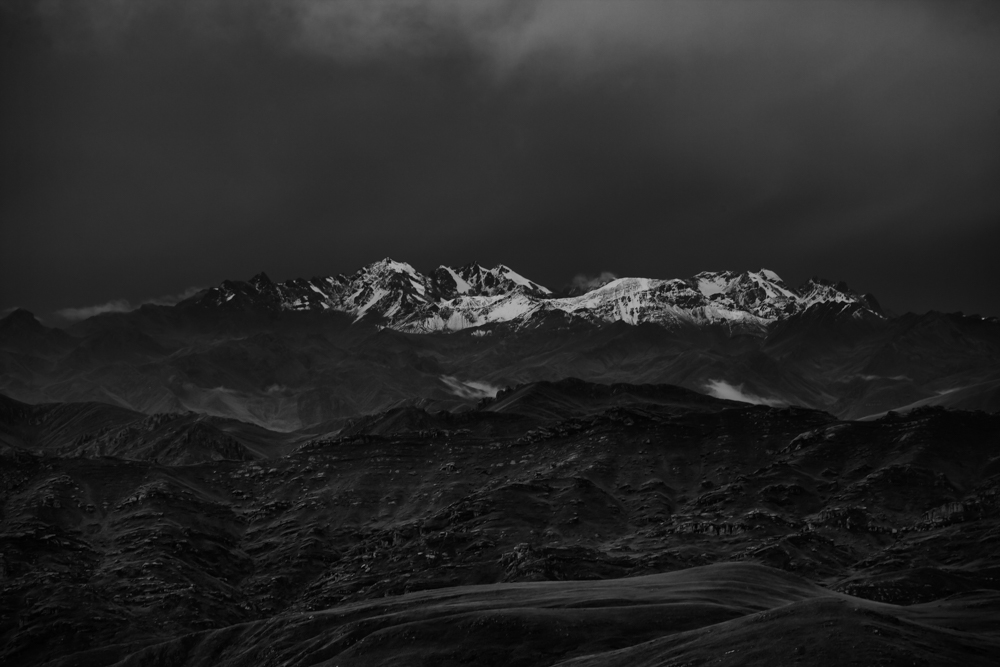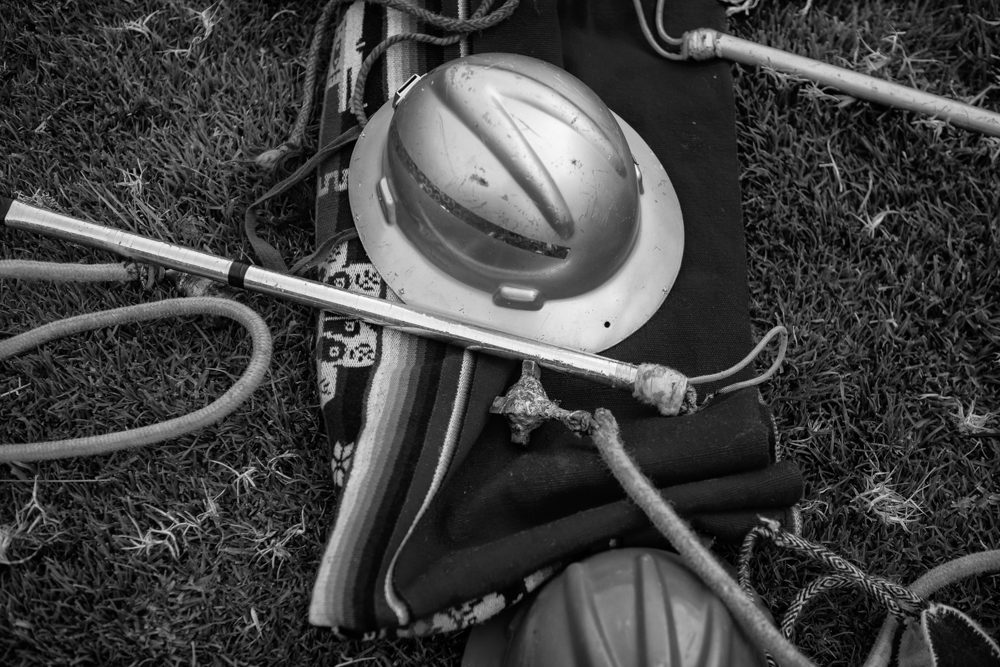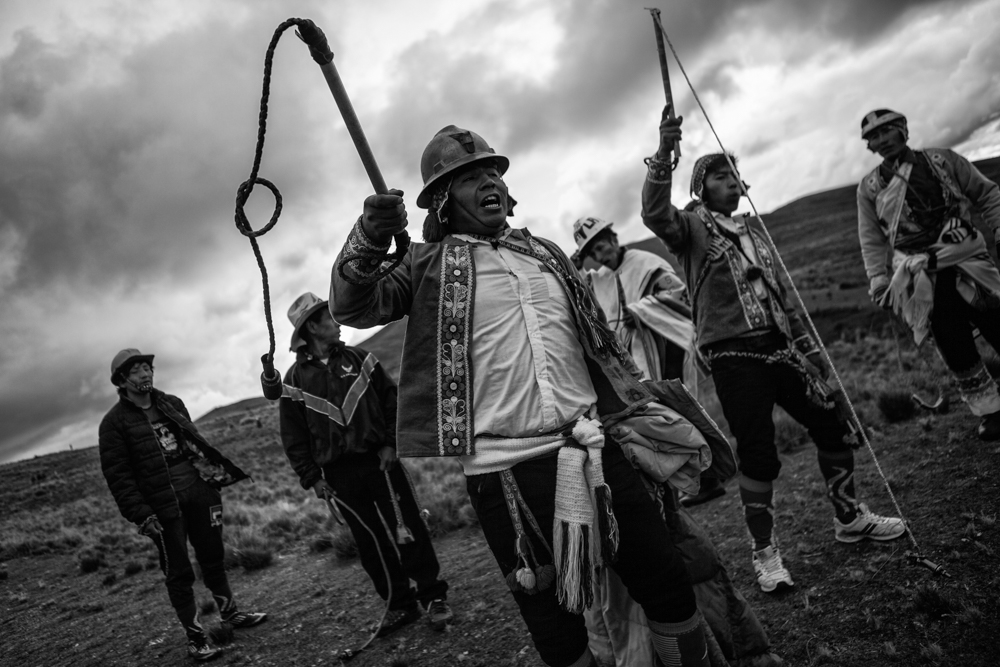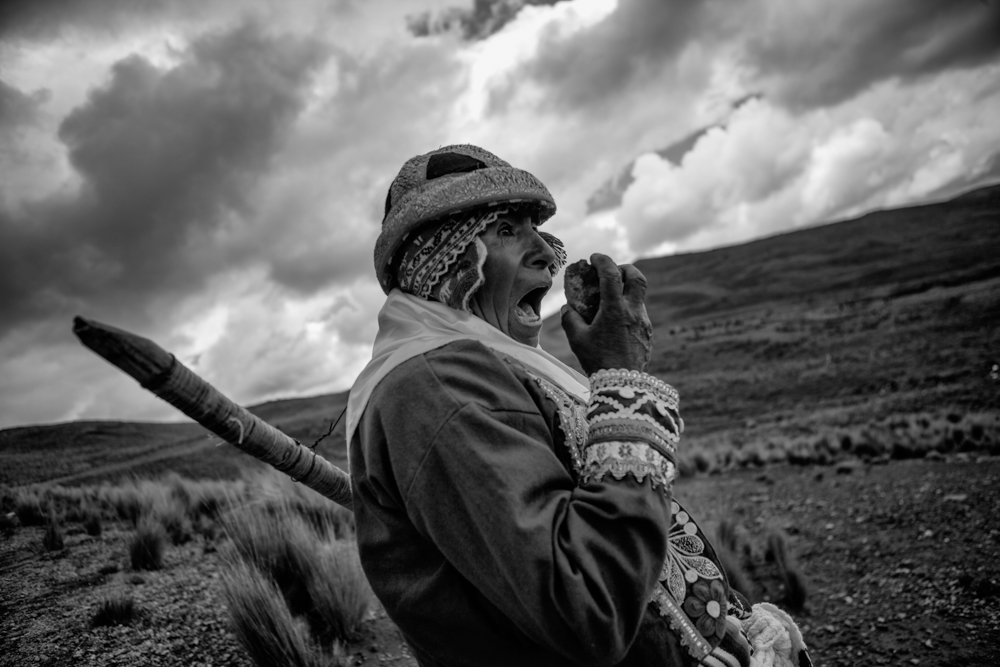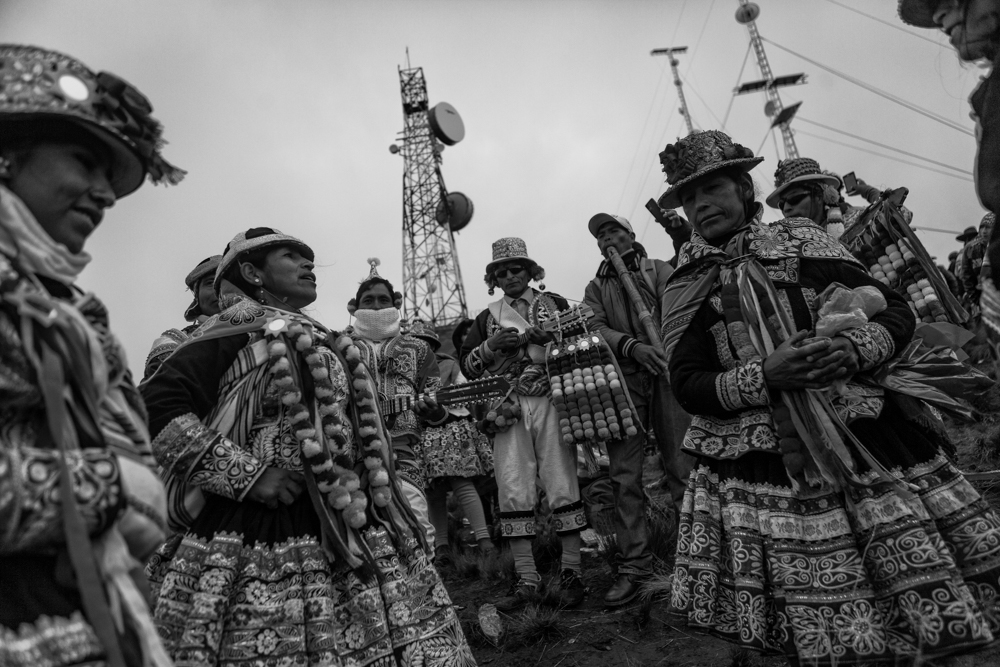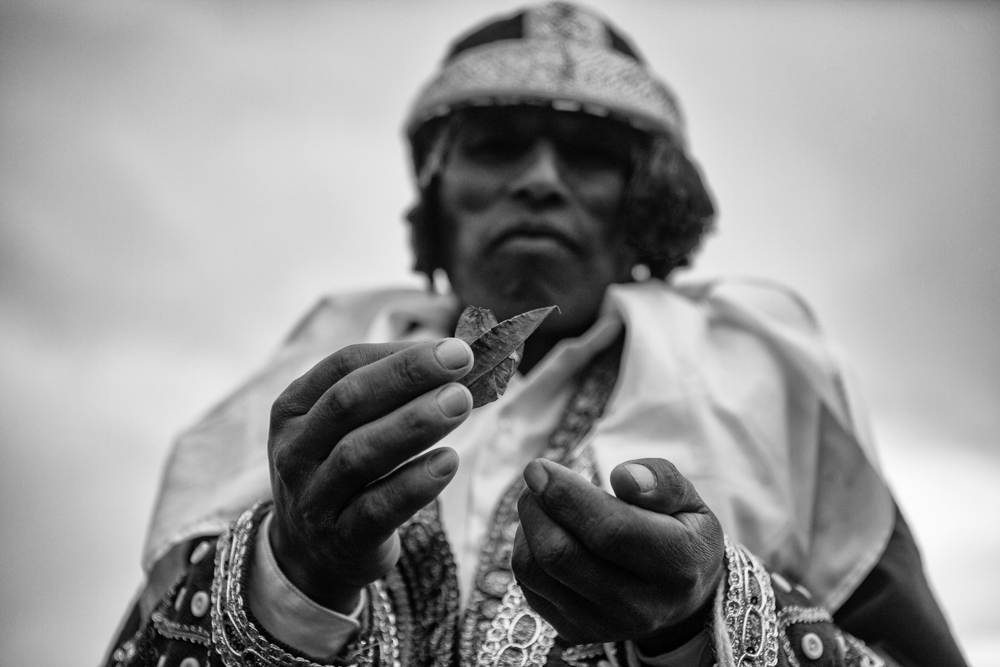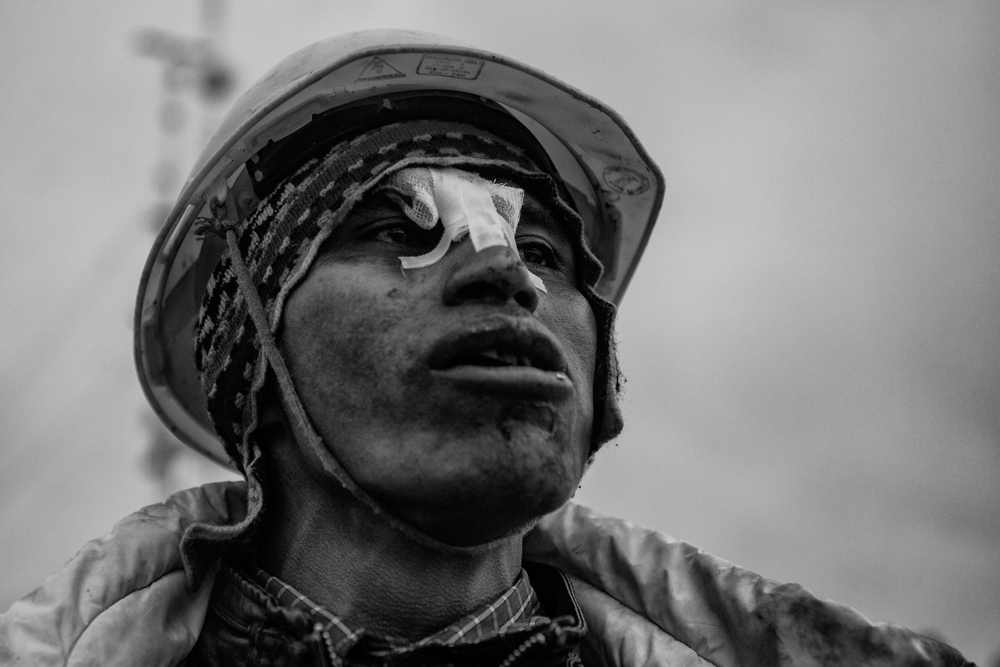Chiaraje: Blood Shall Be Spilled in the Name of Pachamama
Guillermo Gutierrez
2019 — Cusco, Peru
About this series
“Ama wayqey manchankichu (never fear my brother)
wayqechallay fulanito (my dear brother)
yawar mayu unupiña (even if you see yourself involved)
rikukuspapas. (in a great river of blood)
Ama wayqey manchankichu (Never fear my brother)
wayqechallay fulanito (my dear brother)
rumi chiqchi chaupinpiña (even if you see yourself in the middle)
rikukuspapas. (of a great rain of stones)”
-Quechua harangue song during the Chiaraje-
Every January 20, members and allies of the Checca and Q’ewe communities gather on the sacred pampa of Chiaraje to celebrate an ancient and bloody ritual in honor of the goddess Pachamama. The Chiaraje is rooted in the Andean worship of nature, which provides everything and can take everything away.
Preparations begin at dawn. The men of the communities are divided into two sides to face each other in combat, with stones and whips. Days before, they prepare their weapons, incorporating metallic pieces in the tips of the whips. For protection, they use miners’ helmets and shin guards. Wounding the opponent is a serious matter: the blood spilled in combat feeds the Pachamama and guarantees the prosperity and fertility of the farmlands.
Upon reaching the extensive pampa located over four thousand meters above sea level, the men finalize their strategy to repel their opponent and occupy the top of the mountain. The group that achieves this objective is the winner of the contest. The women watch from above and celebrate by singing and dancing. Their participation on the battlefield is not allowed, as it is considered a bad omen. Although the fighting is real, the communities are not enemies. They are neighbors who share a common tradition and a common vision of the world. The fertility of Pachamama is at stake and this requires a meaningful offering. No matter who wins the battle, the blood offered in the ritual guarantees a common prosperous future. Pain, and even death, is part of the ritual, just as in life itself.
Photographer: Guillermo Gutierrez
Nationality: Peruvian
Based in: Madrid, Spain
Website: www.guillermo-gutierrez.com
Instagram: @guilledgc
My name is Guillermo Gutiérrez and I am Peruvian freelance photographer currently based in Madrid-Spain. As a migrant and BIPOC person, I have focused my photography practice in photojournalism and documentary photography, particularly in topics such human rights, equality and indigenous traditions and cultural expressions.
I am a member of Diversify Photo a BIPOC community of non-western photographers, editors, and visual producers. I am part of the Everyday Projects, a global community of visual storytellers, as co-founder and curator of the EverydayPeru Instagram account.
As a photojournalist I have collaborated with large agencies such as Bloomberg and published internationally with assignments for The New York Times, The Washington Post, (USA), NPR (USA), Nature (UK) Libération (France), El País(Spain), among others.
